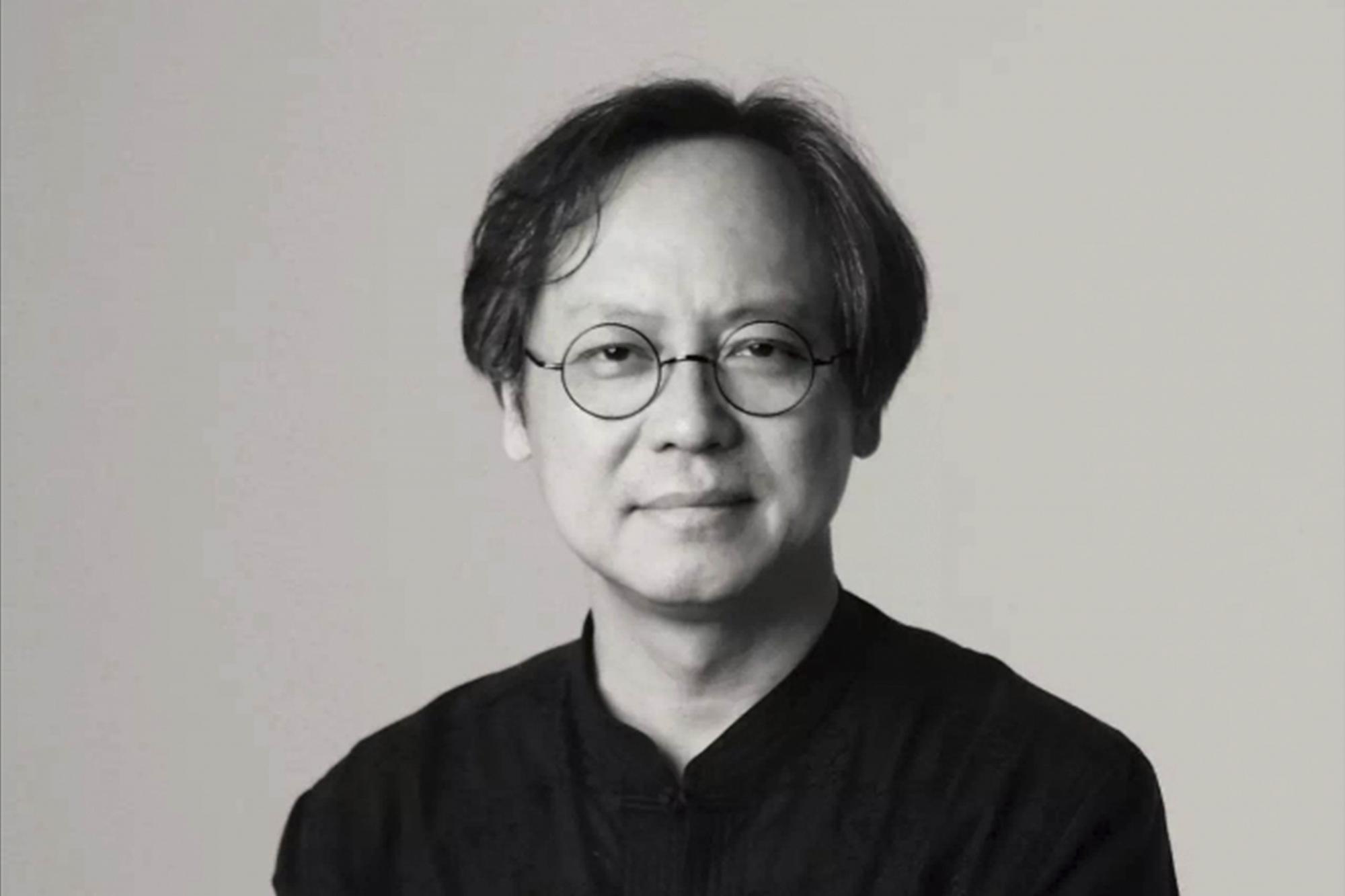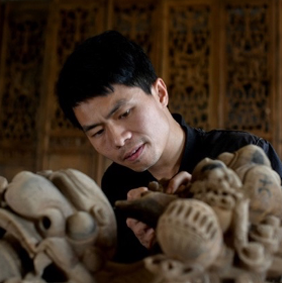The 2020 Training Class Supervisor Meeting of Tsinghua BMW Innovation Center for ICH Safeguarding Held in Beijing
On the afternoon of November 12, 2020, the 2020-2021 Training Class Supervisor Meeting of Tsinghua BMW Innovation Center for ICH Safeguarding, jointly organized by Academy of Arts & Design, Tsinghua University (AADTU); BMW Brilliance Automotive Ltd.; Art and Science Research Center, Tsinghua University; Tsinghua (Qingdao) Academy of Arts and Science Innovation Research (TASA); and Arts and Crafts Training Department of AADTU, was successfully held in Beijing.
❏ 2020 Training Class of Tsinghua BMW Innovation Center for ICH Safeguarding
Based on the intangible cultural heritages and their inheritors selected by the visiting activities of the "BMW China Culture Journey" project, the project team of the Class is formed by Tsinghua University's expert supervisors and intangible cultural heritage (ICH) inheritors to explore the innovative paths and extension models of ICH inheritance, protection and development through six representative ICH projects for the ICHs in Liaoning Province and Hubei Province, including amber carving, Songhua inkstone, traditional tin engraving, Fuxin agate carving, Chu-style lacquerware, and Tongshan wood carving.
❏ WANG Jiansong, Vice President of TASA, presides over this event
WANG Jiansong, Vice President of TASA, was the host of the event, while Associate Professor YANG Peizhang, Associate Professor LIU Runfu, Associate Professor WANG Xiaoxin, Associate Researcher SU Zhipeng, Assistant Professor MA Wenjia, and Assistant Researcher TAN Jiajia (on behalf of President LU Xiaobo) of AADTU attended the meeting as supervisor representatives and gave a brief introduction of their respective research fields. At the same time, the six corresponding ICH inheritors CHEN Huansheng, ZOU Chuanzhi, FENG Yueting, SHI Yan, CHENG Xi and YANG Fan also introduced their respective biographies and works. MA Lei and CHEN Yanzhi from the Arts and Crafts Training Department of AADTU attended the meeting with the supervisors as guests.
First of all, Vice President WANG Jiansong reviewed the results of the previous ICH inheritor cultivation projects and gave an outlook on the current project. He stressed that in the current ICH inheritance and protection, we should not only emphasize "preservation" and "transmission", but also carry out "research" and "innovation" in an open and inclusive manner, which means that on the premise of inheriting traditional skills, we should inherit and develop in a pioneering way, integrating traditional handicrafts into modern life, pay more attention to the marketization progress of the result transformation, and not allow the ICH products to become only-on-the-shelf works of art.
❏ WANG Jiansong, Vice President of TASA, makes a speech
The supervisors and inheritors also had an in-depth discussion on the implementation form and expected results of the project. How to achieve the organic unity and harmonious coexistence between the finely crafted beauty of traditional craftsmanship and modern mass production is an important issue worthy of common consideration by the supervisors and inheritors of the project. With the concept of "Conducting Live Inheritance, Moving Into Life, and Putting People First" and the principle of "Strengthening the Foundation, Enhancing the Education, Expanding the Horizon", the training project aims to teach students according to their needs and through projects, inherit and innovate modern handicrafts, solve the specific problems encountered in the R&D and result transformation of traditional handicraft products, add new vitality to ICH inheritance, and fully demonstrate BMW's respect and support for Chinese traditions and highlight their development concept of corporate culture through the exhibition and promotion of course achievements and academic exchange activities.
❏ The Scene of the Meeting
❏ The Scene of the Meeting
❏ The Scene of the Meeting
❏ The Scene of the Meeting
Through this supervisor meeting, the 2020 Tsinghua BMW Innovation Center for ICH Safeguarding has officially opened a new chapter. Based on the continuation of the model of the 2019 Tsinghua BMW Innovation Center for ICH Safeguarding, cultural inheritance and product transformation will be further expanded and developed through new models with the objective that the ICH innovation model will usher in new enhancement and development through the models of innovative cultivation, practice and product achievements. We wish that the 2020 Tsinghua BMW Innovation Center for ICH Safeguarding project will be held smoothly, so as to add a striking touch to China's ICH industrialization development, the marketization and branding of the Chinese ICH industry, and the upgrading and innovation of the cultural industry.
Introduction to the inheritors and responsible supervisors of the ICH projects
Amber Carving
❏ About the Project
Amber carving was included in the fourth batch of national intangible cultural heritage list in 2014. The reason why Fushun amber carvings are among the most valuable amber artworks in the world is that the raw materials themselves and the carving techniques of Fushun amber have their own distinctive regional and cultural characteristics. These characteristics have made Fushun amber carvings incomparable in quality and artistry when compared to amber carvings from other origins, making them popular with amber enthusiasts and collectors.
❏ About the Supervisor
 Supervisor: LU Xiaobo
Supervisor: LU Xiaobo
President of Academy of Arts & Design, Tsinghua University Ph.D. Supervisor, Vice Chairman of China Artists Association.
❏ Assistant Researcher TAN Jiajia attends the supervisor meeting on behalf of President LU Xiaobo
❏ ICH Inheritor
 ICH Inheritor: CHEN Huansheng
ICH Inheritor: CHEN Huansheng
Inheritor of National Intangible Cultural Heritage
Provincial Amber Carving Master
Chu-style lacquerware technique
❏ About the Project
The Chu-style lacquerware technique is a traditional folk lacquer finishing technique. China's ancient people started making and using lacquerware long ago, and by the Spring and Autumn Period and the Warring States Period, lacquerware production in the Chu state had already reached a very high level. For over 2,000 years, this traditional Jingchu art (the Chu state's capital was in Jingzhou, hence, Jingchu became the synonym of Chu state), which is unique to the oriental culture, has been passed down in the Jingzhou area. Over the past 40 years, more than five thousand pieces of lacquerware have been unearthed in the Chu Tomb in the Jingzhou area, and people have been surprised to find that the "handheld box", "tea plate", "tea food box" and other artifacts unearthed more than two thousand years ago were exactly the same as the objects used in the lives of the locals in the early years after the founding of the People's Republic of China.
❏ About the Supervisor
Supervisor: YANG Peizhang
Associate Professor and Supervisor of Master Students, Academy of Arts & Design, Tsinghua University
❏ ICH Inheritor
ICH Inheritor: ZOU Chuanzhi
Representative Inheritor of Provincial ICH Project
Songhua Inkstone
❏ About the Project
In 2014, the technique of Songhua inkstone making was included in the fourth batch of the national intangible cultural heritage list. As one of the "four famous inkstones" in China, Liao Inkstone is a unique "cultural symbol" in Benxi City, Liaoning Province and has long been famous for its unique stone quality and exquisite manufacturing techniques. The production of a finished Songhua inkstone needs to go through dozens of processes, such as material picking and selection, design, cutting, trimming, carving, polishing, waxing, boxing and packaging, etc. Of which, the most technically demanding are design and carving. Although Songhua Inkstone has only been around for a short time, more than 300 years, to be exact, it has made other inkstones far inferior by virtue of its imperial birth and growth in the inner court of the palace.
❏ About the Supervisor
Supervisor: LIU Runfu
Associate Professor and Supervisor of Master Students, Academy of Arts & Design, Tsinghua University
❏ ICH Inheritor
ICH Inheritor: FENG Yueting
Fifth-generation Inheritor of Songhua Stone Carving Technique.
Traditional Tin Engraving
❏ About the Project
In 2011, traditional tin engraving was listed in the fourth batch of provincial intangible cultural heritage list of Liaoning Province. Tin engraving is a unique craft in China and the world with a development history of several hundred years. After several generations of unremitting sorting and digging of the skills of the predecessors, the traditional tin engraving has been gradually formed, characterized by compact styling, simplicity and exquisiteness, naturalness and ease, and coordinated proportion with the graceful, noble and magnificent Jinzhou tin engraving as a representative.
❏ About the Supervisor
Supervisor: WANG Xiaoxin
Secretary of Party Branch of the Arts and Crafts Faculty of Academy of Arts & Design, Tsinghua University
❏ ICH Inheritor
ICH Inheritor: SHI Yan
Inheritor of Palace Tin Engraving Technique
Fuxin Agate Carving
❏ About the Project
In 2006, Fuxin agate carving was included in the first batch of national intangible cultural heritage list. Fuxin City of Liaoning Province is one of the four major agate production areas in China with its agate carving technique well known at home and abroad. Agate is a medium-grade gemstone with a variety of natural colors and striped patterns, ideal for engraving. A beautiful piece of agate jade is made through a seven-step process, including material selection, skinning, design, polishing, initial carving, fine carving, and setting. The process of Fuxin agate carving is complete, with its basic techniques in a leading position in the industry. Of which, its unique skills include drilling and hollowing, movable chain and ring making, shoulder and ear making, openwork carving and movable ball making, and decorative carving.
❏ About the Supervisor
Supervisor: SU Zhipeng
Associate Researcher and Supervisor of Master Students, Academy of Arts & Design, Tsinghua University
Deputy Secretary-General of the Sculpture Professional Committee of China National Arts and Crafts Society
❏ ICH Inheritor
ICH Inheritor: YANG Fang
Designer and Manager of Liaoning Yangji Agate Co., Ltd.Senior Engineer of Arts and Crafts
Tongshan Wood Carving
❏ About the Project
In general, the technique of Tongshan wood carving is a combination of lines and surfaces, using the dimensional modeling method of combining painting lines and sculptural block surfaces in semi-dimensional plane relief, where the images would retain the natural texture and color of the wood, simple and plain. Deep reliefs and multi-level hollow carving are also the most commonly used, with vivid, antique-looking and clumsy modeling, steady and thick knifing, smooth lines, overlapping but not ambiguous near and far views, and clear and prominent themes, making the viewers feel and think deeper of the images into the stories behind their facades, and never get tired of watching them.
❏ About the Supervisor
Supervisor: MA Wenjia
Assistant Professor of the Sculpture Faculty of Academy of Arts & Design, Tsinghua University
Supervisor of Master Students
❏ ICH Inheritor

ICH Inheritor: CHENG Xi
Fifth-generation Inheritor of Tongshan Wood Carving
